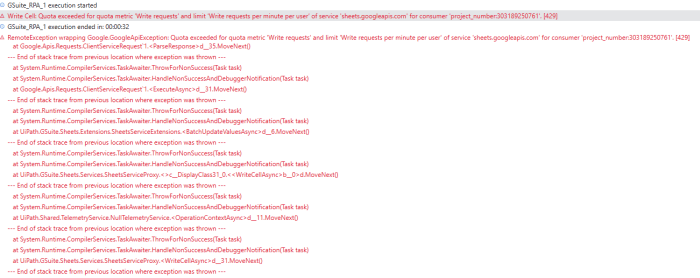Defining “Hard Coloring Page Aquatic Animals”
Hard coloring page aquatic animals – A “hard” coloring page, in the context of aquatic animals, presents a significant challenge to the colorist due to its intricate design and level of detail. These pages move beyond simple Artikels, demanding precision, patience, and a steady hand. The resulting artwork, however, offers a deeply satisfying sense of accomplishment.The complexity stems from several key characteristics. Intricate detail involves numerous small, closely spaced elements, often with complex patterns and fine lines.
Small spaces require careful attention to stay within the lines and avoid smudging, while complex patterns demand a strong understanding of color blending and shading techniques to achieve a visually appealing result. The overall effect is a coloring page that is both visually stimulating and technically demanding.
Suitable Aquatic Animals for Hard Coloring Pages
Many aquatic creatures lend themselves well to the creation of challenging coloring pages. Their often complex forms and unique textures provide ample opportunity for intricate designs. The delicate patterns on a seahorse’s body, for instance, offer a perfect canvas for detailed coloring. Similarly, the numerous tentacles and suckers of an octopus present a wealth of small spaces to fill, while the flowing, ethereal form of a jellyfish allows for exploration of shading and gradient techniques.
Other suitable examples include the intricately patterned shells of various sea snails, the detailed scales of a sea dragon, or the multifaceted eyes of a crab. The level of difficulty can be further increased by incorporating realistic textures, such as the rough skin of a shark or the smooth scales of a fish.
Visual Appeal of Challenging Coloring Pages
The visual appeal of a hard coloring page extends beyond the simple act of filling in colors. The intricate details and complex patterns create a visually rich and rewarding experience. The completed artwork becomes a testament to the colorist’s skill and patience, a beautiful and unique piece of art. The satisfaction derived from completing such a challenge is often cited as a key element of their appeal.
The final product showcases not only the beauty of the aquatic animal depicted, but also the artistry of the colorist in navigating the complexities of the design. The resulting image possesses a level of depth and realism that surpasses simpler coloring pages, offering a sense of accomplishment that enhances the overall artistic experience.
Design Aspects of Hard Aquatic Animal Coloring Pages

Designing effective “hard” coloring pages for aquatic animals requires a focus on intricate detail and complexity, pushing the boundaries of traditional coloring book designs. The goal is to create engaging and challenging activities for older children and adults who appreciate a more sophisticated artistic experience. This involves careful consideration of linework, detail density, and subject matter selection.The following sections detail design considerations for creating three distinct types of hard aquatic animal coloring pages.
Highly Detailed Sea Turtle Coloring Page
This design emphasizes the intricate patterns found on a sea turtle’s shell. Imagine a loggerhead sea turtle, its carapace meticulously rendered with a multitude of small, overlapping scales. Each scale could be individually Artikeld, creating a dense network of lines. The variations in scale shape and size, along with subtle textural details, would add to the complexity.
The head and flippers could also be highly detailed, featuring individual wrinkles and textures. The background could be kept simple, perhaps a subtle wash of ocean blue, to ensure the focus remains on the intricacy of the turtle’s shell. The overall effect would be a visually stunning and highly challenging coloring experience. The page could be formatted to accommodate a large-scale representation of the turtle, allowing for ample space for detailed coloring.
Intricate Underwater Scene Coloring Page
This design features a multitude of small fish within a detailed underwater environment. The scene could depict a vibrant coral reef, with numerous species of fish swimming amongst the coral branches. The fish themselves should be individually designed with distinct features and patterns. Some fish could have intricate scales, others might feature vibrant stripes or spots. The coral itself should be highly detailed, with varied textures and shapes.
Seaweed and other aquatic plants could be incorporated to further enhance the complexity of the scene. The use of varying line weights and densities could create a sense of depth and dimension within the scene. The overall design should be visually engaging and challenging, offering a complex interplay of shapes, lines, and textures. A carefully planned composition will ensure the details are both challenging and visually appealing.
Complex Coral Reef Ecosystem Coloring Page, Hard coloring page aquatic animals
This design showcases the diversity and complexity of a coral reef ecosystem. The coloring page would feature a wide array of marine life, including various types of coral, fish, invertebrates, and possibly even larger animals such as sharks or rays (depending on the intended difficulty). The coral formations themselves would be highly detailed, showcasing their intricate branching structures and varied textures.
Intricate details in hard coloring pages of aquatic animals can be challenging, requiring precision and patience. Developing these skills can be significantly enhanced by structured learning, such as the drawing & coloring anime-style characters 21 course , which teaches valuable techniques applicable to various subjects. The improved hand-eye coordination and color blending learned in the course directly translate to tackling those complex aquatic animal designs with greater ease and finesse.
Each species of fish and invertebrate would be uniquely designed, with distinct features and patterns. The inclusion of smaller details, such as algae, sponges, and other reef inhabitants, would further increase the complexity of the scene. The overall design should accurately represent the visual richness and biodiversity of a coral reef. Strategic use of negative space can enhance the visual impact and challenge.
The use of varying line weights could create a sense of depth and realism.
Illustrative Examples and Descriptions: Hard Coloring Page Aquatic Animals
This section provides detailed descriptions of three aquatic animals and a coral reef, highlighting features that would lend themselves well to challenging and rewarding coloring pages. The level of detail described aims to inspire the creation of intricate and visually engaging designs.
The complexity of these descriptions aims to translate into intricate coloring page designs, encouraging detailed work and creative expression from the colorist.
Whale with Intricate Skin Textures and Shading
Imagine a humpback whale, its massive body rendered in meticulous detail. The coloring page would feature subtle variations in skin tone, depicting lighter areas on the underbelly contrasting with darker patches on its back. Intricate shading would accentuate the folds and wrinkles of its skin, suggesting the immense size and power of the animal. The barnacles clinging to its body would be individually depicted, each with its own subtle shading and texture, creating a three-dimensional effect.
The artist could add detailed representations of the whale’s baleen plates within its mouth, further increasing the complexity of the design. The artist could also illustrate the powerful muscles rippling beneath the skin, subtly hinting at the whale’s strength. The tail fluke, with its intricate network of veins and patterns, would be another area of focus, demanding precise shading and attention to detail.
Highly Detailed Anglerfish
This anglerfish coloring page would showcase the creature’s unique bioluminescent lure, depicted with radiating light emanating from its tip. The lure itself would be intricately detailed, perhaps with small, spiky protrusions or a delicate, feathery appearance. The anglerfish’s large, gaping mouth, filled with needle-sharp teeth, would be rendered with stark contrast, showcasing its predatory nature. Its bulbous body, covered in small, bumpy textures, would be shaded to create a three-dimensional effect.
The coloring page could also include details of its small, almost vestigial eyes, contrasting sharply with the prominence of its lure and mouth. The artist could also consider illustrating the anglerfish in its deep-sea environment, perhaps with bioluminescent organisms scattered around it.
Vibrant Coral Reef
This vibrant coral reef coloring page would depict a diverse array of coral types and marine life. The complexity of the design would come from the variety of coral formations and the numerous species inhabiting them.
The inclusion of numerous species and the detailed rendering of their unique features would make this coloring page a significant challenge.
- Brain Coral: Showcasing its intricate, brain-like convolutions, with variations in color and texture throughout its surface.
- Staghorn Coral: Illustrating its branching structure, with each branch carefully detailed, showing subtle variations in color and thickness.
- Sea Fan Coral: Depicting its delicate, fan-like structure, with intricate details in the branching patterns and a gradient of colors.
- Clownfish (Amphiprioninae): Showing their vibrant orange bodies with distinctive white stripes, emphasizing the contrast between their bright colors and the coral.
- Parrotfish (Scaridae): Illustrating their colorful scales and unique beak-like mouths, capturing their vibrant hues and patterns.
- Sea Turtle (Cheloniidae): Depicting the intricate shell patterns, showcasing the unique markings and textures, with detailed shading to suggest the three-dimensional form.
- Sea Urchin (Echinoidea): Showcasing the spiky exterior, with each spine carefully drawn and shaded to give a realistic texture.
Digital vs. Print Considerations

The choice between creating hard coloring pages digitally and printing them involves a trade-off between convenience, control, and cost. Digital creation offers flexibility and ease of editing, while printing provides a tangible product suitable for immediate use. Understanding the advantages and disadvantages of each approach is crucial for creating high-quality coloring pages.Digital creation allows for easy revisions and experimentation with different color palettes and designs.
The digital format also facilitates online distribution and sales, reaching a wider audience than print-only methods. However, the need for specialized software and a printer for final output can add to the overall cost. Print-based methods, on the other hand, offer immediate tactile interaction and a traditional coloring experience, but lack the flexibility of digital editing. Reproducing large quantities of print coloring pages can be more expensive upfront.
Resolution and File Format Requirements for High-Quality Printable Coloring Pages
High-resolution images are essential for producing crisp, clear, and detailed printable coloring pages. Low-resolution images will result in blurry lines and a less satisfying coloring experience. For optimal print quality, a resolution of at least 300 DPI (dots per inch) is recommended. This ensures that fine details, crucial in intricate designs, are clearly visible. Commonly used file formats for printable coloring pages include JPEG, PNG, and PDF.
JPEG is suitable for photographic images, while PNG supports transparency and is generally preferred for line art. PDF is ideal for preserving the integrity of the design and ensuring consistent print quality across different printers and devices. Using a vector-based format like SVG (Scalable Vector Graphics) offers the highest quality and scalability, allowing for resizing without loss of detail.
However, many home printers do not directly support SVG.
Preparing a Digital Coloring Page for Online Distribution
Preparing a digital coloring page for online distribution involves several steps to ensure ease of access and optimal viewing experience. Firstly, the image needs to be optimized for web use. This often involves reducing the file size without compromising image quality, using tools that compress images without excessive loss. Secondly, the coloring page should be uploaded to a suitable platform.
This could involve using a website dedicated to hosting digital coloring pages, embedding the image on a blog or website, or offering it for sale on an online marketplace. Thirdly, providing clear instructions and licensing information is vital. This includes specifying whether the coloring page is for personal use only or can be used commercially. Additionally, the use of appropriate s and metadata will help improve its visibility in search results.
Finally, ensuring compatibility across different devices and browsers is essential for a seamless user experience. This might involve using common image formats and conducting thorough testing on various platforms.
